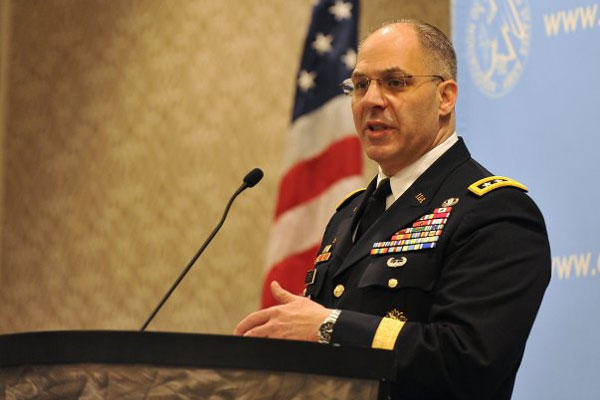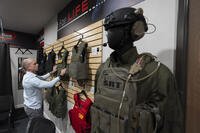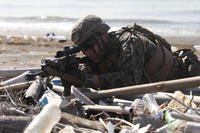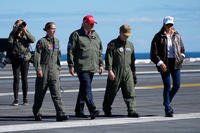WASHINGTON -- The Army's senior logistician said one of his top priorities and challenges was to make the Army an expeditionary force again, one where readiness is not scheduled, but the force is consistently sustained and ready to move on demand.
"We have new missions all around the world everyday - nine of our 10 divisions are committed to those missions outside the United States," said Lt. Gen. Gustave F. Perna, Army G-4, during an Association of the U.S. Army breakfast meeting, March 19. "We are increasing our presence and capability in places we didn't think we were going to be…but we have not deployed forces in an expeditionary manner since 2003… and our logistics skills have atrophied."
Perna reminded the audience that during operations in Iraq and Afghanistan, the Army executed the Army Force Generation, or ARFORGEN, model and understood how to schedule Soldiers and units going in and out of theaters. He said ARFORGEN became a predictable, redundant and repetitive model that was supported by forward operating bases.
"As a result of that predictability, we made decisions that worked very well for us at the time - like establishing theater-provided equipment and left-behind equipment sets while relying heavily on contractors to do maintenance and supply accountability for us," he said. "Decisions like these took unit leaders and Soldiers out of the equation - essentially separating ourselves from these readiness tasks of running the Army from day-to-day and ensuring it was expeditionary and ready to go."
In some cases, he said, those approaches led to adjusting standards downward or lowering expectations about maintenance, supply accountability and deployability.
"The Army cannot afford this approach anymore - we cannot afford it either in a financial way or a requirements standpoint," he said.
Perna said that when he became the G-4 six months ago, the Army secretary and chief of staff described their visions on what the Army needed to do to win in complex environments and that would be to, "develop agile and adaptive leaders who must be ready and modern to ensure the Army is globally responsive and regionally engaged."
The G-4's priorities toward that effort are focused on three lines of effort - leadership development, readiness - tactically and strategically - and support of the Army Operating Concept and Force 2025.
"Under leadership development, we will realign the sustainment brigades underneath each of our division headquarters," he said. "This will strengthen our home-station relationships, allowing us to identify and manage logistics talent on a broader scale, develop our leaders and increase esprit de corps down into division and corps' levels."
He said that to be expeditionary again, the Army's 270,000 logisticians need to re-learn how to do operational logistics on the battlefield," like how to refuel an armored brigade on the move - "a lost art," he said.
"Second, in our readiness line of effort - we're fielding our new information system, the Global Combat Service Support-Army [GCSS] and it's a huge success and a game-changer in the logistics force," Perna said. "The positive impact from GCSS will result from the creation of data-driven supply, maintenance and property management that is unheard of in today's Army."
The G-4 team is also developing a business intelligence capability using data from the GCSS to provide visualization tools necessary for leaders at all levels, he added. "Future GCSS-Army increments will include aviation maintenance, ammunition management and management of Army Prepositioned Stocks or "go-to-war" equipment that is strategically placed around the world.
"Third, in our Force 2025 line of effort, we're applying innovation and technology in support of the Army Operating Concept and future requirements," Perna said. "One example is that we work together executing items like condition-based maintenance or CBM - it's about to come to fruition.
"We have 1,700 vehicles in our fleet which are capable of CBM and we're already seeing significant savings in millions of dollars in executing preventive maintenance versus reactive maintenance," he noted. "We are moving forward in solid position in executing CBM in the aviation community - our most important piece of equipment on the battlefield besides our Soldiers is aviation."
Weighing in on sequestration, Perna said should that happen, the Army will not be able to reset its equipment, which means the life-cycle will not be expanded, nor will the Army be able to train its Soldiers in expeditionary logistics.
"We will not be able to improve our force projection and onward movement in an expeditionary battlefield," he said. "We will not be able to extend our lines of communication into the theater of operations because we will not have done the necessary work to facilitate the relationships and build the capabilities from our industrial partners."



























